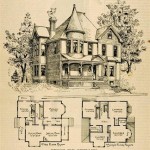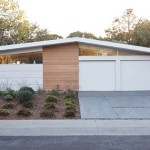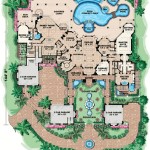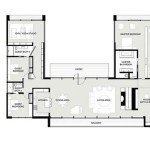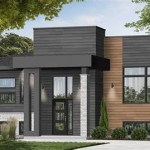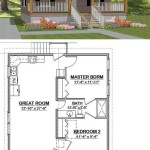Florida House Plans are blueprints designed specifically for the unique architectural requirements and building codes of the state of Florida. These plans incorporate features that cater to the subtropical climate, such as hurricane-resistant construction, energy efficiency, and outdoor living spaces.
Florida House Plans are utilized by architects, builders, and homeowners to create customized homes that meet their needs and preferences. Whether it’s a sprawling ranch-style home with a spacious lanai or a cozy cottage with hurricane impact windows, these plans provide a foundation for constructing safe, comfortable, and stylish residences tailored to the Sunshine State.
This article will delve into the key aspects of Florida House Plans, exploring the design considerations, building codes, and latest trends that shape these specialized blueprints.
Florida House Plans prioritize specific considerations and incorporate unique features that cater to the state’s environment and lifestyle.
- Hurricane-resistant construction
- Energy efficiency
- Outdoor living spaces
- Open floor plans
- Large windows
- High ceilings
- Coastal design elements
- Smart home technology
These elements combine to create homes that are not only stylish and comfortable but also well-suited to Florida’s subtropical climate and building codes.
Hurricane-resistant construction
Hurricane-resistant construction is a crucial aspect of Florida House Plans due to the state’s vulnerability to hurricanes and tropical storms. These storms can bring high winds, heavy rain, and flooding, so it’s essential to build homes that can withstand their impact.
- Reinforced foundation
The foundation of a hurricane-resistant home is reinforced with steel rebar and concrete to provide a solid base that can resist strong winds and prevent the structure from shifting or collapsing.
- Impact-resistant windows and doors
Windows and doors are one of the most vulnerable parts of a home during a hurricane. Florida House Plans specify impact-resistant windows and doors made of laminated glass or polycarbonate, which are designed to withstand high-velocity winds and flying debris.
- Fortified roof
The roof is another critical component of a hurricane-resistant home. Florida House Plans incorporate trusses or metal connectors to reinforce the roof structure and prevent it from being torn off by high winds.
- Storm shutters
Storm shutters are an additional layer of protection for windows and doors. They are made of metal or fabric and can be deployed before a storm to cover openings and prevent wind and rain from entering the home.
By incorporating these hurricane-resistant features into Florida House Plans, homeowners can help ensure the safety and integrity of their homes during these powerful storms.
Energy efficiency
Energy efficiency is a critical consideration in Florida House Plans due to the state’s warm and humid climate. By incorporating energy-efficient features, homeowners can reduce their energy consumption and utility bills while also contributing to environmental sustainability.
Insulation
Proper insulation is essential for maintaining a comfortable indoor temperature and reducing energy consumption. Florida House Plans specify high-quality insulation in walls, ceilings, and floors to minimize heat transfer and improve the home’s thermal performance.
Windows and doors
Windows and doors are another important factor in energy efficiency. Florida House Plans incorporate energy-efficient windows and doors that feature double or triple glazing, low-emissivity coatings, and tight seals to reduce heat gain and loss.
Appliances and lighting
Energy-efficient appliances and lighting can also make a significant impact on energy consumption. Florida House Plans encourage the use of ENERGY STAR appliances and LED lighting, which use less energy and can save homeowners money on their utility bills.
HVAC systems
The heating, ventilation, and air conditioning (HVAC) system is a major energy consumer in any home. Florida House Plans specify high-efficiency HVAC systems, such as those with variable-speed fans and programmable thermostats, to optimize energy usage and provide comfortable indoor temperatures.
By incorporating these energy-efficient features into Florida House Plans, homeowners can create homes that are not only comfortable and stylish but also environmentally friendly and cost-effective to operate.
Outdoor living spaces
Outdoor living spaces are an integral part of Florida House Plans, extending the living area beyond the walls of the home and creating a seamless connection between indoor and outdoor environments.
- Spacious lanais
Lanais are screened-in porches that provide a comfortable and protected outdoor space. They are typically large enough to accommodate seating, dining areas, and even outdoor kitchens, making them perfect for entertaining guests or simply relaxing and enjoying the outdoors.
- Expansive patios
Patios are paved outdoor areas that offer a more open and sun-exposed space. They are ideal for grilling, sunbathing, or simply enjoying the fresh air. Patios can be extended to create larger entertaining areas or even incorporate features such as fire pits or water features.
- Balconies and decks
Balconies and decks are elevated outdoor spaces that provide panoramic views of the surrounding area. They are often located on upper floors of homes and can be accessed from bedrooms or living areas. Balconies and decks offer a private and tranquil outdoor retreat.
- Courtyards
Courtyards are enclosed outdoor spaces that are typically surrounded by walls or buildings. They provide a private and intimate outdoor oasis that is protected from the elements. Courtyards can be landscaped with plants, water features, and seating areas, creating a serene and inviting space for relaxation and contemplation.
By incorporating these outdoor living spaces into Florida House Plans, homeowners can create homes that are not only stylish and comfortable but also fully embrace the state’s subtropical climate and indoor-outdoor lifestyle.
Open floor plans
Open floor plans are a popular feature in Florida House Plans, creating a spacious and airy living environment that is perfect for entertaining and everyday living.
- Spaciousness and flexibility
Open floor plans eliminate walls between traditional rooms, such as the living room, dining room, and kitchen, creating a large and continuous space. This openness allows for greater flexibility in furniture arrangement and provides a sense of spaciousness, even in smaller homes.
- Natural light and ventilation
Open floor plans maximize natural light by reducing the number of walls and obstructions. This creates a brighter and more inviting living environment. Additionally, open floor plans promote better air circulation, allowing for cross-ventilation and reducing the need for artificial lighting and cooling.
- Improved flow and accessibility
Without walls separating different areas, open floor plans allow for seamless flow and accessibility throughout the home. This is particularly beneficial for families with children or individuals with mobility issues, as it reduces barriers and creates a more accessible living space.
- Enhanced communication and interaction
Open floor plans foster a sense of community and encourage interaction between family members and guests. By eliminating physical barriers, open floor plans create a more social and interactive living environment, where people can easily communicate and connect with each other.
Overall, open floor plans are an excellent choice for Florida House Plans, as they provide spaciousness, flexibility, improved accessibility, and enhanced social interaction, creating homes that are not only comfortable but also conducive to a modern and active lifestyle.
Large windows
Large windows are a signature feature of Florida House Plans, allowing homeowners to take full advantage of the state’s beautiful natural surroundings and abundant sunshine.
Natural light and views
Large windows maximize natural light, creating brighter and more inviting living spaces. They frame panoramic views of the outdoors, bringing the beauty of nature into the home. Whether it’s a breathtaking waterfront vista or a lush garden, large windows connect the indoors with the outdoors, enhancing the overall ambiance and well-being of occupants.
Energy efficiency
While large windows provide ample natural light, they can also contribute to energy efficiency when properly designed and installed. Energy-efficient windows feature double or triple glazing, low-emissivity coatings, and tight seals to minimize heat gain and loss. This helps regulate indoor temperatures, reducing the need for artificial lighting and cooling, resulting in lower energy consumption and utility bills.
Ventilation and air flow
Large windows, when strategically placed, can promote natural ventilation and air flow. By opening windows on opposite sides of the home, homeowners can create cross-ventilation, allowing fresh air to circulate and reducing the need for air conditioning. This passive cooling strategy helps maintain comfortable indoor temperatures, especially during Florida’s warm and humid summers.
Architectural appeal
Large windows not only enhance the functionality of a home but also contribute to its architectural appeal. They create a modern and sophisticated aesthetic, adding visual interest and character to the exterior of the house. Large windows can be combined with other architectural elements, such as balconies, decks, or lanais, to further enhance the home’s visual appeal and outdoor living experience.
In conclusion, large windows are an essential element of Florida House Plans, providing numerous benefits that enhance the living experience. They bring in natural light, frame stunning views, promote energy efficiency, improve ventilation, and add architectural appeal. By incorporating large windows into their designs, homeowners can create homes that are not only beautiful but also comfortable, sustainable, and connected to the outdoors.
High ceilings
High ceilings are a defining feature of Florida House Plans, contributing to the spaciousness, comfort, and overall ambiance of the home.
Spaciousness and grandeur
High ceilings create a sense of spaciousness and grandeur, making even smaller rooms feel larger and more inviting. The vertical space allows for taller windows, further enhancing the feeling of openness and bringing in more natural light. High ceilings also provide ample room for architectural details, such as crown molding, chandeliers, and decorative beams, adding a touch of elegance and sophistication to the space.
Improved air circulation and thermal comfort
High ceilings promote better air circulation within the home. Warm air naturally rises, and with high ceilings, there is more space for the air to circulate and distribute evenly throughout the room. This helps prevent stratification, where warm air accumulates near the ceiling and cooler air settles at the floor level. Additionally, high ceilings can contribute to thermal comfort by reducing the feeling of stuffiness and providing a more comfortable living environment, especially during Florida’s warm and humid summers.
Natural light and ventilation
High ceilings allow for larger windows and doors, which maximize natural light and ventilation. By strategically placing windows and doors, homeowners can create cross-ventilation, allowing fresh air to flow through the home and reduce the need for artificial lighting and cooling. High ceilings also facilitate the use of skylights, which can provide additional natural light and create a more open and airy atmosphere.
Architectural appeal and style
High ceilings add architectural interest and style to a home. They can create a dramatic and sophisticated ambiance, especially when combined with other architectural elements such as large windows, balconies, and open floor plans. High ceilings are particularly well-suited to Florida’s coastal and contemporary architectural styles, where they enhance the sense of indoor-outdoor living and create a seamless transition between the interior and exterior spaces.
In summary, high ceilings are an integral part of Florida House Plans, offering numerous benefits that enhance the living experience. They create a sense of spaciousness, improve air circulation and thermal comfort, maximize natural light and ventilation, and add architectural appeal and style. By incorporating high ceilings into their designs, homeowners can create homes that are not only beautiful but also comfortable, sustainable, and perfectly suited to Florida’s subtropical climate and lifestyle.
Coastal design elements
Coastal design elements are a hallmark of Florida House Plans, reflecting the state’s unique coastal lifestyle and environment. These elements bring the beauty and tranquility of the outdoors into the home, creating a harmonious blend of indoor and outdoor living.
- Natural materials and textures
Coastal design incorporates natural materials and textures, such as wood, stone, and linen, to create a warm and inviting ambiance. Wood paneling, stone accents, and woven fabrics bring the organic beauty of the outdoors into the home, evoking a sense of relaxation and connection to nature.
- Light and airy color palettes
Coastal design often features light and airy color palettes inspired by the colors of the beach and ocean. Whites, creams, and shades of blue, green, and beige create a serene and spacious atmosphere. These colors reflect the natural light and enhance the feeling of openness, making the home feel larger and more inviting.
- Coastal-inspired patterns and motifs
Coastal design incorporates patterns and motifs that evoke the seaside, such as seashells, waves, and stripes. These elements add a touch of whimsy and coastal charm to the home. They can be found in fabrics, wallpapers, artwork, and decorative accessories, creating a cohesive and visually appealing coastal aesthetic.
- Indoor-outdoor living
Coastal design seamlessly blends indoor and outdoor living spaces, capitalizing on Florida’s subtropical climate. Large windows and doors open up the home to the outdoors, creating a natural flow between the interior and exterior. Outdoor living areas, such as lanais and patios, are often incorporated into the design, extending the living space and providing opportunities for relaxation, dining, and entertaining.
By incorporating these coastal design elements into Florida House Plans, homeowners can create homes that embody the essence of coastal living. These elements bring the beauty and tranquility of the outdoors into the home, creating a serene and inviting environment that is perfectly suited to Florida’s unique lifestyle and climate.
Smart home technology
Convenience and automation
Smart home technology offers unparalleled convenience and automation, allowing homeowners to control various aspects of their homes remotely or through voice commands. From adjusting lighting and temperature to locking doors and monitoring security cameras, smart home devices provide a seamless and effortless living experience. Homeowners can automate routines, such as turning off lights when leaving the house or adjusting the thermostat before bedtime, maximizing comfort and efficiency.
Energy efficiency and sustainability
Smart home technology can significantly contribute to energy efficiency and sustainability. Smart thermostats learn occupants’ temperature preferences and adjust temperatures accordingly, reducing energy waste. Smart lighting systems allow for remote control and scheduling, ensuring lights are turned off when not needed. Additionally, smart appliances, such as refrigerators and washing machines, can be integrated with the smart home system, optimizing their energy consumption and water usage.
Enhanced security and safety
Smart home technology enhances security and safety by providing real-time monitoring and alerts. Smart security systems include motion sensors, door and window sensors, and surveillance cameras that can detect and alert homeowners to any suspicious activity. Smart locks allow for remote access and keyless entry, providing peace of mind and convenience. Additionally, smart smoke and carbon monoxide detectors can send notifications in case of emergencies, ensuring the safety of occupants.
Personalized living experiences
Smart home technology enables homeowners to personalize their living experiences according to their preferences and routines. Smart speakers can play music, control smart devices, and provide information and entertainment. Smart lighting systems can be customized to create different ambiance and moods, while smart thermostats can be programmed to maintain desired temperatures throughout the day. By integrating smart home devices into their daily lives, homeowners can create a truly customized and comfortable living environment.
Incorporating smart home technology into Florida House Plans offers numerous benefits, including convenience, energy efficiency, enhanced security, and personalized living experiences. By leveraging the latest technological advancements, homeowners can create smart homes that are not only comfortable and stylish but also sustainable, secure, and tailored to their unique needs and lifestyles.










Related Posts

